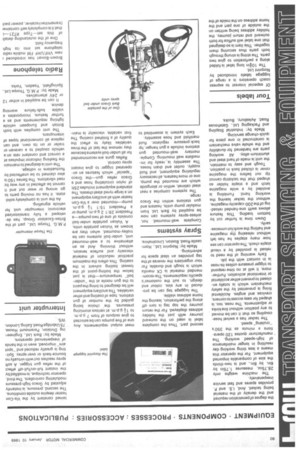Radio telephone
Page 62

Page 63

If you've noticed an error in this article please click here to report it so we can fix it.
Brown-Boveri has introduced new VHF/UHF FM mobile radio telephone set into its high frequency field.
One of the outstanding detail: of this set—Type RT21—i that it is completely self-contain ei (transmitter/receiver, power pad control unit) in one case, and its dimensions are only 10.2in. by 2.23in. by 6.3in. Although designed for fixed/mobile use it can easily be adapted by the addition of a waterproof case for use on motorcycles and open vehicles.
Standard features include squelch and memory circuits.
An additional feature to the basic transmitter/receiver equipment is the facility for selective calling. By using selective calling the base station is able to call one or more mobile stations by using special tone codes as initial signal, before relaying the message.
This special feature is con sidered a great advantage in many parts of the world because inconvenience and time wastage are reduced to a minimum by the fact that the mobile set can be left unattended. The receipt of the selective call signal at the mobile receiver can be arranged to give an external indication that the main station is calling either by the vehicle horn sounding or headlights flashing.
The radio-telephone is fully transistorized and meets with the GPO specification. Power is obtained from a standard 12V supply.
British Brown-Boveri is responsible for all sales and service.
Made by : British B row nB overi Ltd., Glen House. Stag Place, London, SW1.








































































































